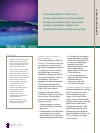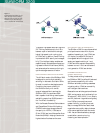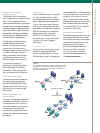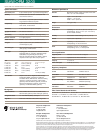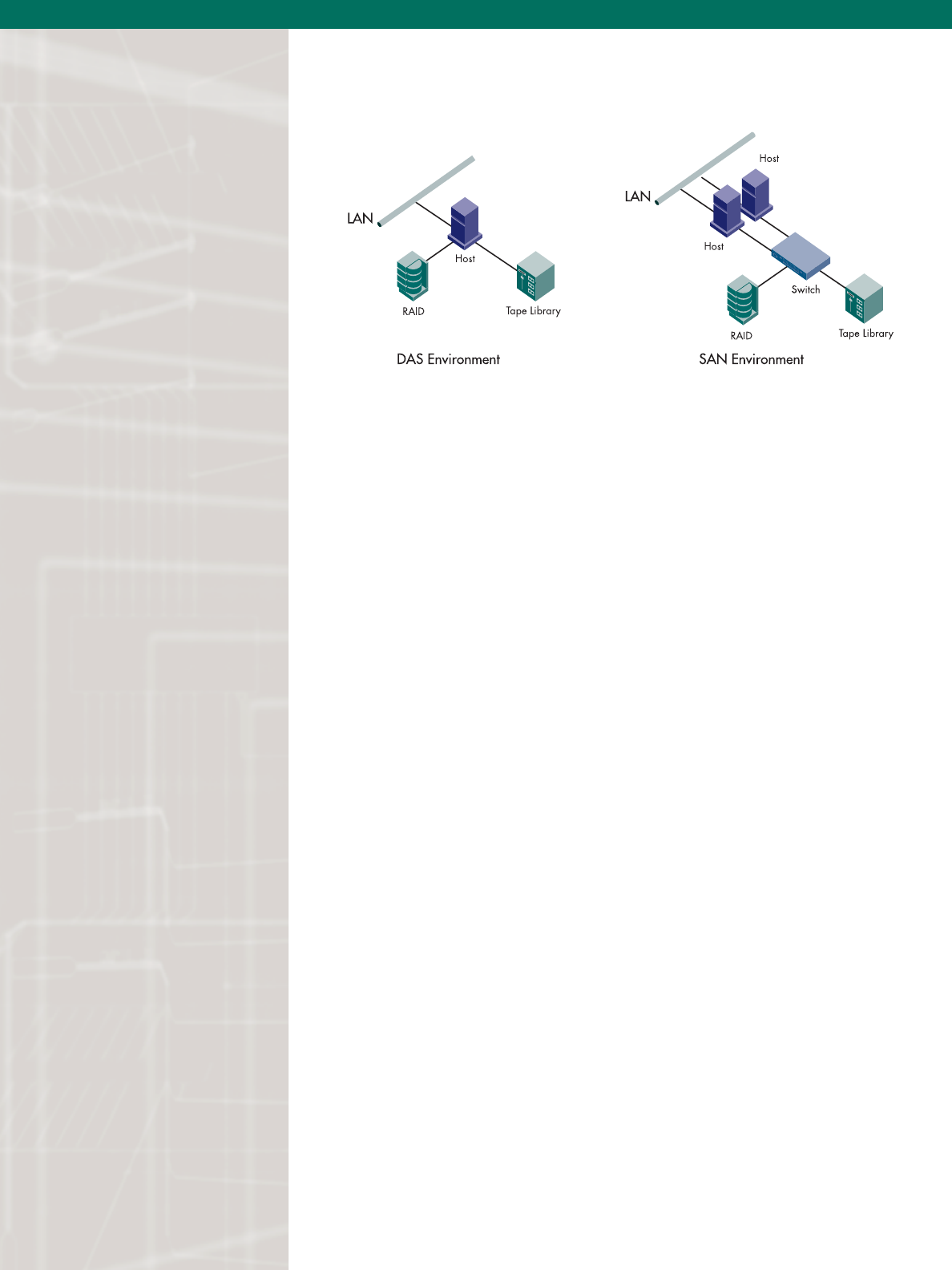
To support high-speed data traffic, optional
ISL Trunking combines up to four ISLs
between a pair of switches into a single,
logical high-speed trunk running at up
to 8 Gbit/sec. In addition, Frame Filtering
improves both SAN security and managea-
bility.This intelligent design enables new
capabilities such as hardware-enforced zon-
ing based on World-Wide Name (WWN)
and advanced performance monitoring to
optimize storage resource utilization.
HIGH AVAILABILITY THROUGHOUT THE FABRIC
The full-fabric version of the SilkWorm 3200
is designed to provide high-availability
switching in redundant dual-fabric SANs
for small-to-medium-sized deployments.
Combining the proven reliability of
the SilkWorm family with a wide
range of advanced fabric services, the
SilkWorm 3200 line provides a SAN
fabric capable of delivering overall system
availability greater than 99.999 percent—
the “five nines” of availability.
With the Brocade Extended Fabrics feature
and Dense Wave Division Multiplexing
(DWDM) technology, storage networks
can span up to 100 km (1 Gbit/sec) or
50 km (2 Gbit/sec) over Metropolitan Area
Networks (MANs)—helping to ensure the
highest levels of business continuance.
FAST, RELIABLE 2 GBIT/SEC PERFORMANCE
The SilkWorm 3200 line provides excellent
price/performance value with all ports
capable of operating at 1 and 2 Gbit/sec
(full-duplex) to enable 32 Gbit/sec of
uncongested switch throughput.Auto-
sensing and speed-matching of 1 and
2 Gbit/sec traffic ensures interoperability
between current 1 Gbit/sec devices and
next-generation 2 Gbit/sec devices.
INVESTMENT PROTECTION FOR
EXISTING TECHNOLOGY
To help protect existing investments,
the SilkWorm 3200 line offers full backward
and forward compatibility with other
SilkWorm switches—providing a seamless
migration path to 2 Gbit/sec connectivity
and intelligent fabric services.
Because the new switch supports multivendor
SAN environments—such as those built on
Windows NT/2000, UNIX, Linux, Solaris,
and AIX platforms—organizations migrating
from DAS environments have much
greater flexibility in building low-cost,
easy-to-manage SANs. As a result, these
organizations can quickly deploy business
continuance applications such as remote,
LAN-free, and serverless backup; storage
consolidation; remote mirroring;
clustering; and data replication.
SILKWORM 3200
Figure 1.
While DAS environments do not
allow storage resource sharing,
SANs provide an easy and cost-
effective way to share storage—
even in multivendor environments.



